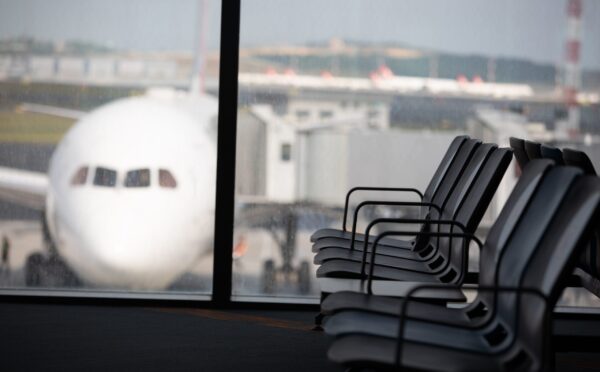Authors
Partner, Energy, Calgary
Calgary Managing Partner, Calgary
Associate, Regulatory, Indigenous and Environmental, Calgary
Associate, Corporate, Calgary
On June 8, 2021, the Alberta Energy Regulator (AER) released draft Directive XXX: Licensee Life-Cycle Management (the Draft Directive), Bulletin 2021-22: Invitation for Feedback on Proposed New Licensee Life-Cycle Management Directive (the Directive Bulletin) and Bulletin 2021-23: Mandatory Closure Spend Targets (the Closure Spend Bulletin). These publications mark the latest steps toward full implementation of the Alberta government’s Liability Management Framework (the Framework) – a framework developed to reduce the province’s inventory of orphan and inactive well sites.
The Draft Directive and associated bulletins include several significant changes for oil and gas operators in the province and give operators the chance to submit feedback before the Draft Directive is finalized (see the Directive Bulletin at the above link for details).
Background
The changes proposed by the Draft Directive and the new industry-wide mandatory closure spending targets announced in the Closure Spend Bulletin are summarized below. For further background on the Framework and the steps already taken to implement it, see:
- our summary of the Framework, which first announced significant changes to the regulatory regime aimed at addressing outstanding oilfield liabilities;
- an overview of associated changes to the Oil and Gas Conservation Rules and Pipeline Rules, which, among other things, enabled the AER to set closure targets for licensees; and
- an outline of the updated rules on licence eligibility pursuant to AER Directive 067: Eligibility Requirements for Acquiring and Holding Energy Licences and Approvals (Directive 067), which was amended earlier this year to accommodate changes to financial disclosure requirements, assessment criteria for determining “unreasonable risk”, and requirements for maintaining licence eligibility.
The Draft Directive
The Draft Directive is being developed in phases and is ultimately intended to replace AER Directive 006: Licensee Liability Rating (LLR) Program and Licence Transfer Process (Directive 006). Directive 006 sets out Alberta’s Licensee Liability Rating (LLR) system, which has been used to determine an operator’s eligibility to hold a licence or approval on the basis of a simple assets-to-liabilities ratio. The Draft Directive sets out the following changes to Alberta’s regulatory regime for managing liabilities associated with the initiation, construction, operation, and closure (including abandonment and reclamation) of oil and gas assets:
- the introduction of a holistic assessment of a licensee’s capabilities and performance;
- the Licensee Management Program, which outlines how licensee management will occur across the energy development life cycle;
- the Inventory Reduction Program, which includes mandatory closure spending targets;
- updated application requirements relating to the licence transfer process; and
- information regarding the collection of security deposits.
One of the most significant proposed changes under the Draft Directive is the further development of a holistic, multifactor approach to inform AER decisions regarding licence eligibility under Directive 067, liability obligations, mandatory annual closure spending targets, licence transfers and security deposits. The AER will assess the capabilities of licensees to meet their regulatory and liability obligations by considering the 17 risk factors set out in section 4.5 of Directive 067, along with the following factors from the Draft Directive’s proposed licensee capability assessment (LCA):
- financial health;
- estimated total magnitude of liability (active and inactive), including abandonment, remediation, and reclamation;
- remaining lifespan of mineral resources and infrastructure, and the extent to which existing operations may fund current and future liabilities;
- rate of closure activities and spending, and pace of inactive liability growth;
- management and maintenance of regulated infrastructure and sites, including compliance with operational requirements;
- compliance with administrative regulatory requirements, including the management of debts, fees and levies; and,
- any other factor the AER considers appropriate as the LCA evolves.
Under the proposed Licensee Management Program, the results of the LCA will be used to identify licensees at risk of failing to meet regulatory and liability obligations. The AER will pursue engagement with at-risk licensees, which may include education and encouragement to follow best-practices, or regulatory steps such as changing licence eligibility, restricting new applications, requiring security deposits, or issuing orders.
The Draft Directive also proposes the Inventory Reduction Program (IRP) to set mandatory closure targets in the form of minimum amounts of closure work or spending on closure activities, or both. Under the IRP, the AER will set annual mandatory closure targets for each licensee. Licensees will be required to meet and report on their closure targets (work and spending) and will have an option to provide security deposits to the AER in lieu of meeting closure work targets. Security deposits will be capped at the total cost of the licensee’s deemed liabilities, which are currently quantified pursuant to Directive 006, and include the sum of the costs to suspend, abandon, remediate, and reclaim all wells and facilities for which the company is the licensee, adjusted for status (active, inactive, abandoned, and problem site designation).
The Closure Spend Bulletin
To implement the IRP, Bulletin 2021-23 announced industry-wide spending targets for 2022 and 2023, and forecasted targets for 2024 – 2026. The industry-wide mandatory target is $422 million for 2022, increasing to $513 million (forecasted) by 2026.
Licensee-specific mandatory targets for 2022 will be released to licensees through the OneStop closure report on July 31, 2021.
To help licensees prepare, the Closure Spend Bulletin provides examples of what work will likely count toward meeting closure targets.
Examples of eligible work include:
- surface abandonment of active or inactive wells;
- surface Casing Vest Flow/Gas Migration repairs on inactive wells;
- Environmental Site Assessments (Phase 1 and 2) on inactive sites;
- remediation work on inactive sites;
- reclamation site work;
- equipment removal on inactive sites;
- facility abandonment work;
- re-abandonment repairs; and,
- downhole abandonment.
Examples of ineligible work include:
- wellbore suspensions;
- pipeline discontinuation;
- remediation on active sites; and,
- portions of work funded by Site Rehabilitation Program grants.
Implications, implementation and opportunity for feedback
In the months to come, the AER will make phased changes to Directive 006 to transition fully from the traditional LLR approach to the more holistic licensee assessment, which includes the LCA outlined in the Draft Directive. The AER has stated that future changes also will include changes to other directives respecting liability management to ensure alignment with the Framework.
The Draft Directive and Closure Spend Bulletin mark significant developments in implementing the Framework, and should reduce the risk of licensees becoming defunct with significant outstanding abandonment liabilities. While the shift toward a more holistic assessment relative to the formulaic asset-to-liability ratio approach traditionally followed by the AER provides improved flexibility in establishing licence eligibility, information and reporting requirements imposed on applicants and licensees are likely to increase. Moreover, the AER’s focus on closure spending and lifecycle management will impose additional requirements on licensees that, in some cases, are likely to materially increase a licensee’s financial requirements relative to the status quo. The proposed changes also have the potential to complicate asset transfers that have yet to close, as licence transfers only will be approved by the AER where the transferee meets the AER’s evolving licence eligibility requirements.
The AER has invited feedback on the Draft Directive through Sunday, July 25, 2021 (see the Directive Bulletin for information on the feedback process). We encourage stakeholders to take part in this process if they have any concerns with the Draft Directive, and to continue to monitor the AER’s ongoing Framework implementation initiatives, which are evolving relatively quickly and are likely to take effect later this year.


